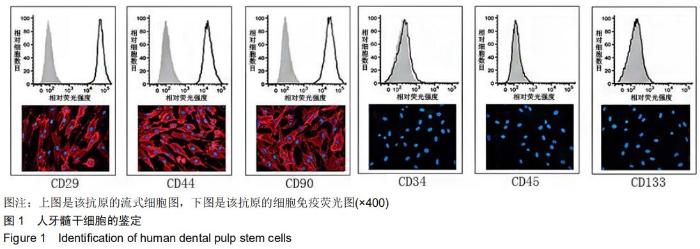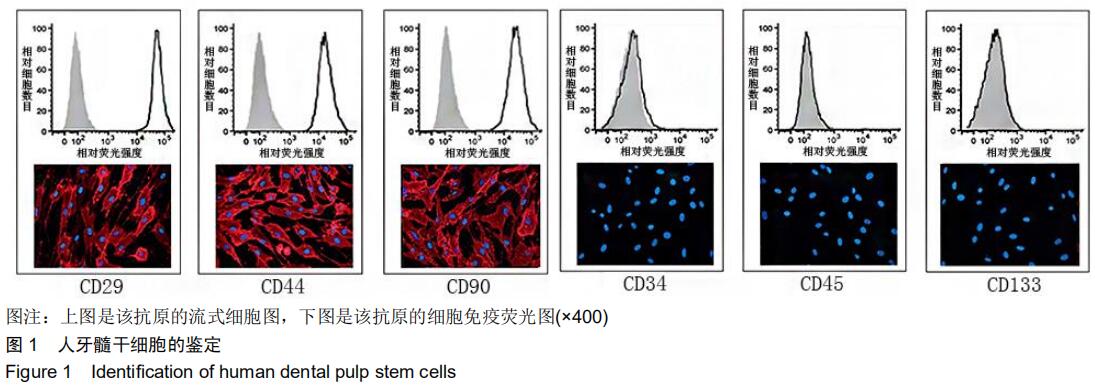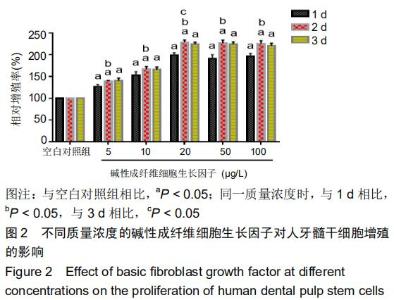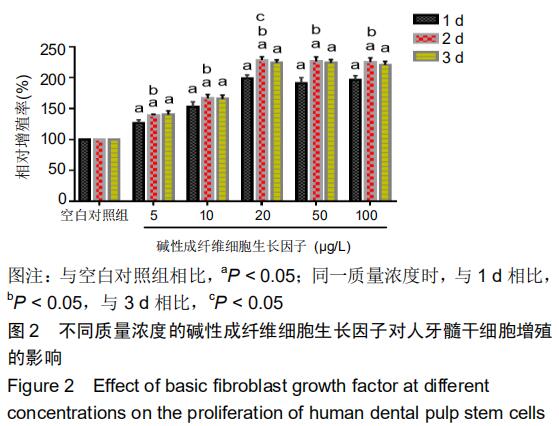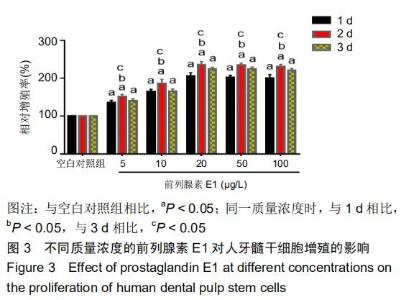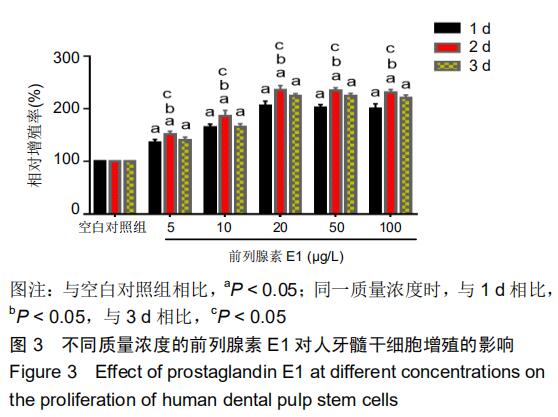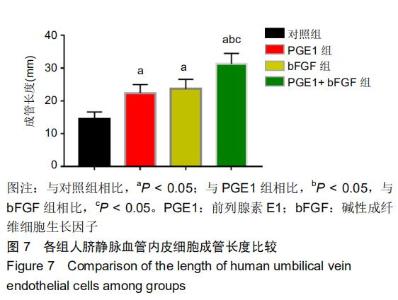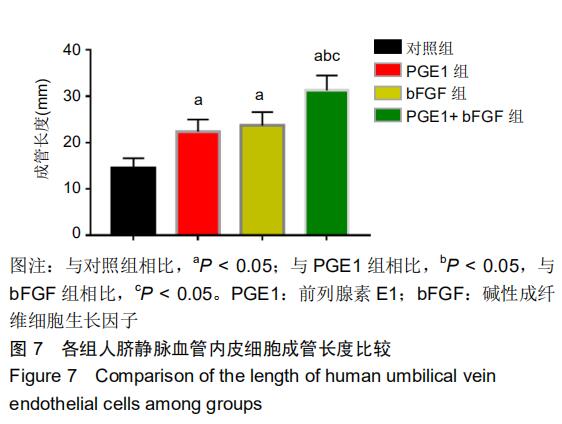[1] GHARAEI MA, XUE Y, MUSTAFA K, et al. Human dental pulp stromal cell conditioned medium alters endothelial cell behavior. Stem Cell Res Ther. 2018;9(1):69.
[2] KIM HB, BAIK KY, SEONWOO H, et al. Effects of pulsing of light on the dentinogenesis of dental pulp stem cells in vitro. Sci Rep. 2018;8(1):2057.
[3] XIAO J, YANG D, LI Q, et al. The establishment of a chemically defined serum-free culture system for human dental pulp stem cells. Stem Cell Res Ther. 2018;9(1):191.
[4] AGHAZADEH M, SAMIEI M, HOKMABAD VR, et al. The Effect of Melanocyte Stimulating Hormone and Hydroxyapatite on Osteogenesis in Pulp Stem Cells of Human Teeth Transferred into Polyester Scaffolds. Fibers and Polymers. 2018;19(11):2245-2253.
[5] HAGHIGHI F, DAHLMANN J, NAKHAEI-RAD S, et al. bFGF-mediated pluripotency maintenance in human induced pluripotent stem cells is associated with NRAS-MAPK signaling. Cell Commun Signal. 2018;16(1):96.
[6] 刘亚楠,李祥伟,孙宏晨. bFGF调控DPSCs迁移、增殖和分化的研究进展[J].口腔医学, 2017,37(8):746-750.
[7] 柳鑫,肖燕,江川,等.牙髓干细胞来源外泌体诱导内皮细胞血管生成能力的研究[J].牙体牙髓牙周病学杂志,2018,28(4):187-196.
[8] XU F, LIU X, WANG C, et al. Prostaglandin E1 Preconditioning Attenuates Liver Ischemia Reperfusion Injury in a Rat Model of Extrahepatic Cholestasis. Biomed Res Int. 2018;2018:3812424.
[9] 吉章阁,张素平,凌莉,等.前列腺素E1对脑梗死后神经干细胞增殖和迁移的影响[J].中国神经精神疾病杂志,2013,39(6): 326-330.
[10] LIU B, ZHANG S, XIONG X, et al. Lipo‑prostaglandin E1 modifies cognitive impairment in rats with vascular cognitive impairment by promoting angiogenesis via the VEGF/VEGFR pathway. Mol Med Rep. 2017;16(3):3117-3124.
[11] ASGHARI SANA F, ÇAPKIN YURTSEVER M, KAYNAK BAYRAK G, et al. Spreading, proliferation and differentiation of human dental pulp stem cells on chitosan scaffolds immobilized with RGD or fibronectin. Cytotechnology. 2017; 69(4):617-630.
[12] 孙旭鸯,陈湧.Twist通过ERK通路对体外鼻咽癌细胞血管生成的影响[J].中国病理生理杂志,2019,35(2):298-304.
[13] HONG JW, LIM JH, CHUNG CJ, et al. Immune Tolerance of Human Dental Pulp-Derived Mesenchymal Stem Cells Mediated by CD4⁺CD25⁺FoxP3⁺ Regulatory T-Cells and Induced by TGF-β1 and IL-10. Yonsei Med J. 2017;58(5): 1031-1039.
[14] MOSSAHEBI-MOHAMMADI M, ATASHI A, KAVIANI S, et al. Efficient Expansion of SALL4-Transduced Umbilical Cord Blood Derived CD133+Hematopoietic Stem Cells. Acta Med Iran. 2017;55(5):290-296.
[15] MOKRY J, SOUKUP T, MICUDA S, et al. Telomere attrition occurs during ex vivo expansion of human dental pulp stem cells. J Biomed Biotechnol. 2010;2010:673513.
[16] AL-ZER H, KALBOUNEH H. Dental pulp stem cells-derived schwann cells for peripheral nerve injury regeneration.Neural Regen Res. 2015;10(12):1945-1946.
[17] BLUEMN EG, COLEMAN IM, LUCAS JM, et al. Androgen Receptor Pathway-Independent Prostate Cancer Is Sustained through FGF Signaling. Cancer Cell. 2017;32(4):474-489.e6.
[18] TAETLE R, MENDELSOHN J. Modulation of normal and abnormal myeloid progenitor proliferation by cyclic nucleotides and PGE1. Blood Cells. 1980;6(4):701-718.
[19] 冯毅,马静,黄贞.牙髓干细胞促进牙髓血管生成的相关分子机制研究[J].牙体牙髓牙周病学杂志,2013,23(12):768-772.
[20] 刘景,袁媛.HDPSCs在体外促进血管再生的潜能及其分子机理研究[J].现代口腔医学杂志,2018,32(1):11-15.
[21] 刘俊,刘氜,张飞,等.前列地尔预防和治疗显微外科术后血管危象的临床对照研究[J].赣南医学院学报,2019, 39(2):22-24,44.
[22] HAIDER DG, BUCEK RA, GIURGEA AG, et al. PGE1 analog alprostadil induces VEGF and eNOS expression in endothelial cells. Am J Physiol Heart Circ Physiol. 2005; 289(5):H2066-2072.
